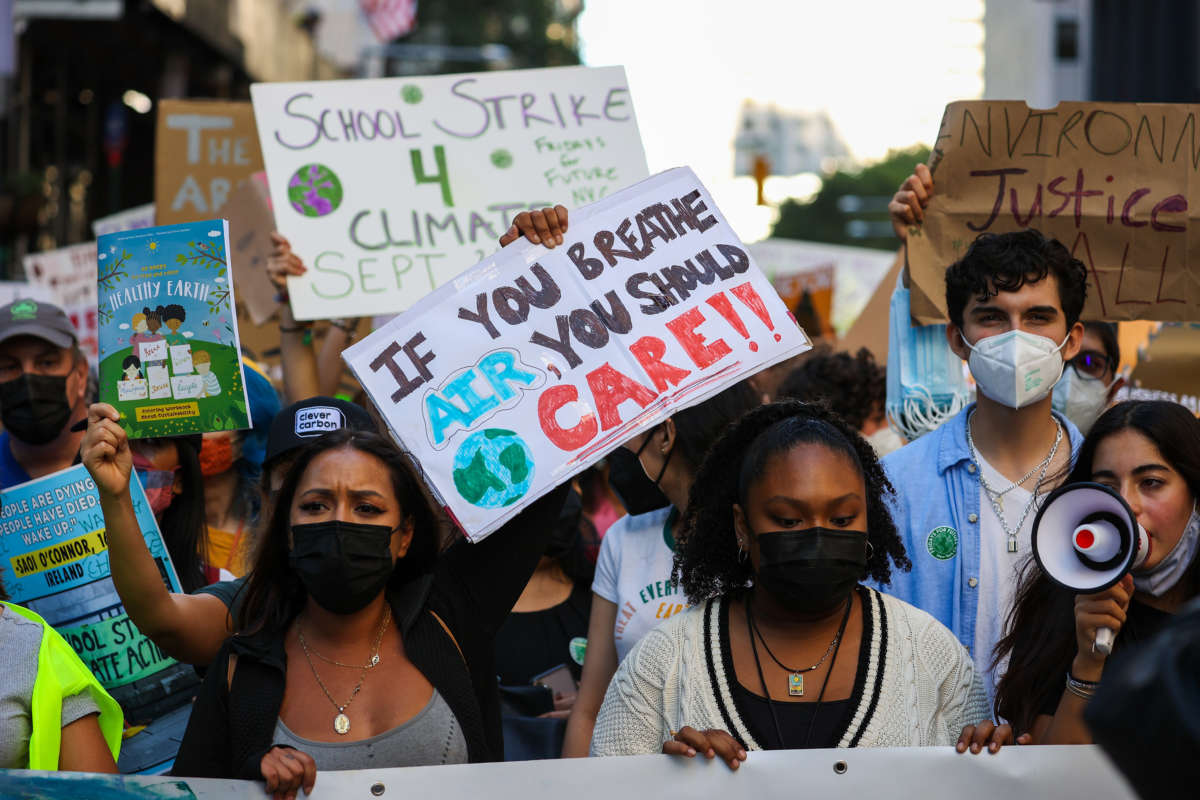Support justice-driven, accurate and transparent news — make a quick donation to Truthout today!
More Americans than ever are worried about global warming, according to data that stretches back to 2008 from the Yale Program on Climate Change Communication (YPCCC) and George Mason University Center for Climate Change Communication. The increase is reflective of growing concern over the climate crisis as Americans experienced climate disaster after climate disaster this summer.
The survey shows that, for the first time, a majority of Americans think that people in the U.S. are “being harmed right now” by global warming, with 55 percent of the 1,006 people surveyed responding as such. Furthermore, the amount of people who report being worried about global warming is at an all-time high, with 35 percent of respondents saying they’re “very worried” and 35 percent saying they’re “somewhat worried.”
Previously, worry about global warming has fluctuated. The last time worry about global warming neared current levels was in December of 2018, according to YPCCC and George Mason, with 69 percent of people polled saying that they were worried about the issue. The share of Americans who believed the U.S. was experiencing ongoing harm from global warming also neared a majority in 2018, but fell short of 50 percent.
The amount of people acknowledging the reality of global warming is also reaching a high, the recent survey data showed. That portion of the population has increased six points since March of 2021 to 76 percent in September, when the survey was conducted. During that time, the share of people saying that they’re “very worried” about global warming saw a 10 point increase as well. The researchers note that this data demonstrates how views on the climate crisis in the U.S. have “shifted significantly” in the past six months alone.
The steady increase in concern over global warming is a continuation of a pattern that YPCCC and George Mason researchers have tracked over the years. In March, they found that the share of people who are “alarmed” about climate change has more than doubled over the past five years, reaching 24 percent.
The new data comes as the U.S. emerges from a summer of deadly climate disasters. Heat waves scorched the Pacific Northwest, where many residents don’t have air conditioning. Wildfires blazed across a dozen states, with record wildfires like the Dixie Fire burning in California for months.
In August, Hurricane Ida made landfall in Louisiana, where the storm was so powerful that it reversed the flow of the Mississippi River, and a natural gas plant failure left New Orleans without electricity. At least 82 people died, and hundreds lost their homes.
The disasters were so widespread that a September analysis by The Washington Post found that nearly 1 in 3 Americans lived in a county that experienced a weather disaster over the summer. That same analysis found that 64 percent of Americans lived somewhere that experienced a multiday heat wave, which climate researchers warn are the most deadly kind of climate event.
Climate scientists say that none of the major climate catastrophes this summer would have been nearly as bad if not for the climate crisis, which continues largely unabated across the globe. A new study out this week shows that the effects of the climate crisis will only worsen in the future: on average, a child born this year will face seven times as many heat waves and twice as many wildfires as their grandparents did, the study found.
Congress is in talks over provisions to address the climate crisis in the reconciliation and infrastructure bills, but conservative Democrats are fighting hard against the bills’ most sweeping climate proposals, with fossil fuel lobbyists all but dictating what proposals the lawmakers support.
Meanwhile, climate advocates still face an uphill battle in Washington. Despite big promises on climate from President Joe Biden, the White House recently shunned a new report by the Intergovernmental Panel on Climate Change in a document justifying more offshore oil drilling. Activists are ramping up pressure on Biden before the United Nations climate talks in November, saying that the Biden administration has thus far fallen short on action that is needed to curb the worst effects of the climate crisis.
Press freedom is under attack
As Trump cracks down on political speech, independent media is increasingly necessary.
Truthout produces reporting you won’t see in the mainstream: journalism from the frontlines of global conflict, interviews with grassroots movement leaders, high-quality legal analysis and more.
Our work is possible thanks to reader support. Help Truthout catalyze change and social justice — make a tax-deductible monthly or one-time donation today.
